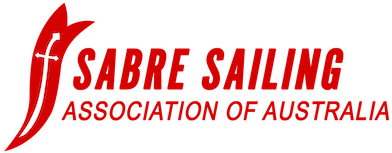Forum Replies Created
-
AuthorPosts
-
darrenwhitten8
ParticipantThe way I do is to use ring spanner with a piece of masking tape to hold the nut in place while the spanner is inserted into the boom. I extend the spanner using small piece of wood taped to the spnnner. The bolt is inserted through the fiitting and boom to the nut inside the boom. If you want insert the bolt from the inside the boom use a stainless steel machine screw because it has a hexagonal head which is easier to use with a ring spanner. A bit of patience is a good assistant.
Phillip Johnson
National Measurerdarrenwhitten8
ParticipantThe only fittings permitted on the end of the boom to allow the clew position to be adjusted is the towel rail fitting shown in the building notes.
The recent changes to the measurement rules do not in my opinion change this. I believe that if this change was to occur a specific notice of motion to change the rules would be required and the states would have to vote and decide. This has not happened so I will not issue a certificate or approve the installation of other fittings in place of the towel rail at the present time.Phillip Johnson
National Measurerdarrenwhitten8
ParticipantThe shroud and forestay measuring points are taken at the lowest point of the hole in the tang ie the bearing point for the thimble or shackle pin depending on the arrangment. There is no measurement requirement for the distance between the hole in the tang and the attachment point on the mast. This is a hangover from when all boats were rigged using fittings from the guide that is now not part of the building notes. I have observed many masts with significantly different distances between the shroud attachment hole and the attachment point on the mast but I have not noticed any significant performance differences. Perhaps someone out there has. As for compliance with ISAF measuring rules I do not believe that we have any obligation to conform although it can be useful at times. We already measure our sails in the same manner I believe.
Phillip Johnson
National Measurerdarrenwhitten8
ParticipantThe only permissable method of adjusting rig tension is by the use of a lanyard on the forestay. If it necessary to accurately reproduce the setting a mark on the lanyard will do this. A waterproof marking pen will do this.
Phillip Johnson
National Measurerdarrenwhitten8
ParticipantMike got it right. All the measurements are in the latest rules.
Phillip Johnson
National Measurerdarrenwhitten8
ParticipantI use Riley RM166 top and bottom to allow the bridle to be adjusted easily.
Be careful to make the holes in the thwart as small as possible and glue them using a marine epoxy such as West or Bote Cote. For the replacement thwart make sure it is maximum size 50×19. The timber type does not seem to matter providing the thwart is well anchored at the side tanks and the top of the centrboard case. The latter is very important.
The use of silver ash would make the new thwart indestructible.Phillip Johnson
National Measurerdarrenwhitten8
ParticipantThis is not recorded as measured. The original plans were sold to W.O’Toole of S.A. probably in 1981.
Phillip Johnson
National Measurer -
AuthorPosts
